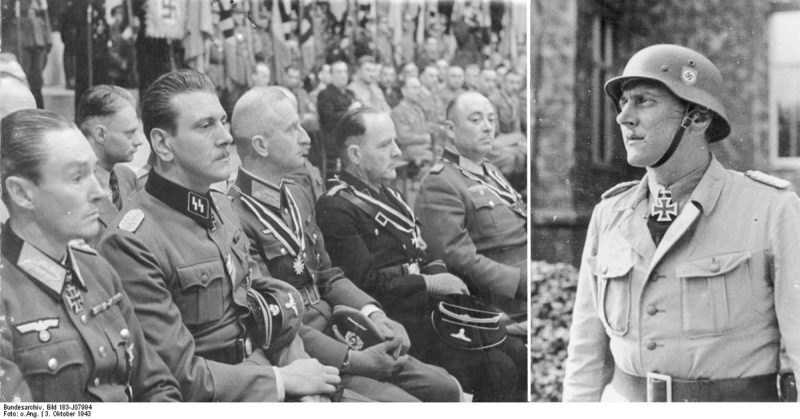Guest Blog For War History Online By Adeyinka Makinde
The rescue seventy years ago of the Italian dictator Benito Mussolini from captivity in a hotel lodge situated high on the Apennine Mountains by a contingent of German Special Forces is a feat of military enterprise which is still lauded to this day.
Just as the later mission accomplishments of the British Special Air Services (SAS) Regiment in storming and ending the siege of the London embassy of Iran in 1979 and the liberation of hostages three years earlier by Israel’s Sayeret Matkal at Uganda’s Entebbe Airport, the German raid at the Campo Imperatore at Gran Sasso astounded the world; eliciting praise for its precision planning and the deftness of its execution.
Indeed, in commending the audacity of the enemy while speaking before the House of Commons, Prime Minister Winston Churchill remarked on the mission as having been “one of great daring.” His nemesis Adolf Hitler telephoned one particular soldier who had participated in the raid and informed him that “you have performed a military feat which will become part of history.”
The soldier to whom Hitler spoke was a fellow Austrian and member of the Waffen-SS named Otto Skorzeny.
While the soldiers who partook in the aforementioned British and Israeli missions remained anonymous until a great many years had passed by; save for the posthumous heroic status granted to the fallen Yonatan Netanyahu, Skorzeny was conferred with instant fame.
His name, to the exclusion of others, is the one to which the achievement of the Gran Sasso Raid is inextricably linked, in terms of both its conception and execution.
His reputation as a bold tactician and an expert in the special mission which was capable of changing the currents of war grew to the extent that as the war drew to a close, he was considered by the allied forces to be the “most dangerous man in Europe.”
To his biographers, he was “Commando Extraordinary”; the Fuehrer’s favorite commando who transcended the craft of ‘mere’ soldering by displaying an adeptness at fomenting psychological warfare against huge armies.
And even in the post-war years his fame and infamy expanded. He was interviewed by major Western news outlets to whom he disclosed that his services were in demand from all manner of intelligence and military organizations.
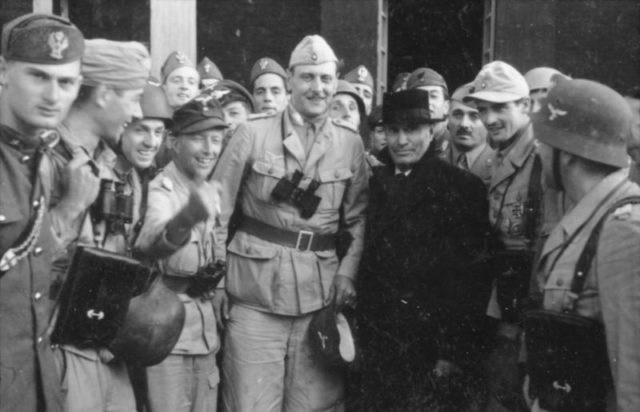
He was, it was alleged, at the helm of a vast secret network which smuggled thousands of war criminals out of allied occupied Europe to Spain and South America.
While to some analysts, in the decades which followed his passing, he was nothing less than the ‘father’ of modern terrorism.
That he was composed of an exceptional mindset and imbued with a rare level of determination cannot be denied. As a soldier, Skorzeny was resolute in his belief that he had no choice other than to fight for the Third Reich until the endseig; the illusory ‘final victory’ promised by his Fuehrer.
And because of this commitment, and the results that he apparently produced, he was called upon to execute a range of missions which would have taxed the most exceptional of soldiers.
Beginning with the event which created his celebrity and what could be termed the ‘Skorzeny legend’, he developed an aura as a rare specimen of warrior.
His admirers, many of whom were soldiers and commandos who fought in the armies opposing Nazi Germany, attested to his talents; intimating him to have been an almost supernaturally gifted practitioner of a highly specialized form of warfare.
Yet, amid the broad truths in the depictions of certain acts of bravery and of resourcefulness while acting at the center of key missions and engagements during the Second World War, lurking in the background was a significant element of state-sponsored propaganda, of myth-making and an incessant tendency toward self-promotion.
And while there is much truth to the old adage of history being written by the victors of war, there is nonetheless a not unfounded allegation that in this case, the reverse applies.
There is much to ponder about the irony of the widely accepted history of Skorzeny; a soldier of a vanquished army, succeeding in creating the conditions in which others would write a hugely favorable account of a life and career that may conceivably have ended on the gallows.
Born into a relatively prosperous Viennese middle-class family in 1908 as the Hapsburg-era was drawing to a close, the personality of Otto Skorzeny in his youth and early adulthood was marked by boldness and directness.
As was the family tradition, he joined a dueling fraternity, Schlagende Verbindungen, and in 1928 earned the coveted Schmisse or ‘Scars of Honour’ while a student at the Vienna Technical College.
“My knowledge of pain, learned with the saber, taught me not to be afraid,” he would later say. “And just as in dueling when you must concentrate on your enemy’s cheek, so, too, in war. You cannot waste time on feinting and sidestepping. You must decide on your target and go in.”
These words summed up his sense of tenacity and a taste for adventure. His affiliation to a fencing society was, in fact, an inextricable part of the passed down values of the Skorzeny family which would irreparable shape his belief system and, indeed, his destiny. This was a strong immersion in German ultra-nationalist sentiment.
Thus it was that in 1931 Skorzeny joined the Austrian Nazi party which advocated anschuluss with Germany; an objective which came to fruition in 1938. His involvement with Austrian National Socialism provided the basis for his meeting with Ernst Kaltenbrunner, future head of the SS-Reichssicherheitshauptamt or Reich Central Security Office (RSHA), who would later become something of a benefactor.
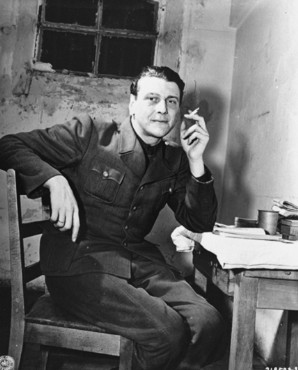
Skorzeny formed an engineering firm soon after graduating in that field and he worked as a civil engineer until the outbreak of war in 1939. His effort of volunteering for the Luftwaffe was rejected; at 31 years of age and possessing a burly 6-foot 4-Inch-frame, he was adjudged to be too old and too tall for the aircrew training program.
So, Skorzeny joined the Waffen-SS as an officer-Cadet. He took a short training course to become a technical officer but remained a non-commissioned officer.
His background as an engineer was utilized as a maintenance officer and in this posting went into battle in a number of theaters of war: the Netherlands, France and the Balkans.
It was in the Balkans in April of 1941 that Skorzeny became a commissioned officer after his regiment played a key part in putting down a revolt by Yugoslav military officers who had overthrown the government of Prince-Regent Paul for its closeness to the Nazi state.
Two months later he participated in Operation Barbarossa, the German invasion of the Soviet Union, as part of the 2nd SS Panzer Division Das Reich. Skorzeny was injured during the early winter of 1941 while still serving in the Soviet Union requiring a period of convalescence.
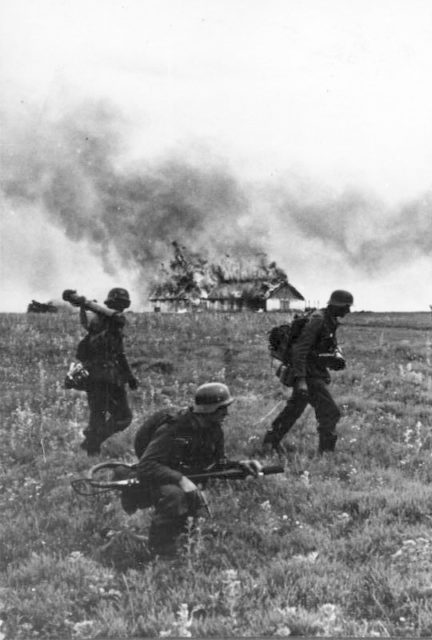
It was at this point in time that he began reading about different forms of unconventional warfare with the use of commandos and he did not hesitate to share his views with his superiors on ways of putting them into action.
On recovering, Skorzeny was not re-deployed to his previous role and instead, at the behest of Kaltenbrunner, was earmarked by Walter Schellenberg, head of the Sicherheitsdienst (SD) or foreign intelligence service of the SS, to direct a number of specially designated schools to be involved in imparting agents with skills in the areas of espionage and sabotage.
Skorzeny was subsequently appointed as the commander of a newly created unit which eventually came to be known as the SS Combat Unit Centre which was based at Freidenthal Castle in Orienberg.
His first major mission codenamed ‘Operation Francois’, a plan which involved parachuting agents into Iran to encourage acts of sabotage on allied supplies headed for the Soviet Union via railway was deemed a failure.
The agents were turned over to the British by dissidents from among the Qashqai mountain tribe when they ran out of the gold they had been using to pay for the services of the rebels.
Then came Unternehmen Eiche, in English, ‘Operation Oak’, the successful rescue of Benito Mussolini. In July of 1943, the Duce had been arrested on the orders of King Vittorio Emmanuelle and placed under arrest after a meeting of the Grand Council of Fascism had issued a vote of no confidence in his leadership.
The German defeat at the Battle of Stalingrad in February 1943 and the allied invasion of southern Italy spelled an impending doom for war-weary Italy.
But as the Italian government worked feverishly in secret to break its alliance with the Nazi state, German armies, as a protective measure, proceeded to disarm the Italian army and to occupy those parts of the peninsula which had not yet been conquered by invading Allied armies.
The Germans were also keen to rescue Mussolini from his captors in order to prevent the soon-to-defect Italians from handing him over to the allies who they presumed would put him on trial.
The Italians, in turn, were aware that attempts would be made to snatch the prisoner and he was held at locations which would not be readily accessible starting with the islands of Ponza and La Maddalena on the Tyrrhenian Sea.
Operation Eiche could, of course, only be put in motion after the necessary intelligence was obtained, and Skorzeny was involved in the task of finding out where Mussolini was being held.
In August, Skorzeny escaped death after being shot down near Sardinia when reconnoitering in a Heinkel He 111 bomber. The plane was able to crash-land into the sea and he and the crew swam to a nearby island where they were picked up by an Italian naval vessel.
When Mussolini was again located, this time at the Hotel Imperatore on Gran Sasso, a plan of action was effected. But contrary to popular belief, this was not devised by Skorzeny.
While Skorzeny did carry out preliminary surveillance of the area, Herbert Kappler, the SS figure in Rome who would later be involved in the notorious massacre in the Ardeatine Caves, had earlier provided the location and its topological features.
Furthermore, the actual operation plan was devised by Major Harald Mors, the commander of a paratrooper training battalion of the Luftwaffe, which was supervised and approved by General Kurt Student.
In an interview conducted by the producers of an Austrian-made documentary on Skorzeny which was released in 2010, Mors claimed that there had never been any discussion regarding Skorzeny’s participation in their deliberations and that only after the plans for the operation had been completed did Student inform him that Skorzeny had asked him to be part of the operation since he had “spent weeks searching for the man and he wants to know if he is really there.”
According to Mors, Skorzeny was on the trip without possessing any formal command authority, making him in effect a mere passenger. It was clear that a man like Skorzeny would not be content to remain as a passenger and neither did the SS which as had been the case with other major military and civilian organizations in the Nazi state remained highly competitive with each other.
At various points in the history of the Third Reich, the SS had vied for some aspect of power and influence with the interior ministry, the foreign office, the Abwehr and the Luftwaffe, the key participants in this operation.
A contemporary document has Heinrich Himmler, ever keen to get the upper hand in his rivalry with Luftwaffe chief Herman Goering, stating that he expected “SS-Hauptsturmfuehrer Skorzeny to exert himself to the utmost.”
Situated at six thousand feet high and accessible only by cable car, Gran Sasso possessed a terrain which was not favorable to landing aircraft. And with a force of around 200 armed carabinieris guarding the deposed leader, carrying out a rescue attempt would be an exceedingly onerous undertaking.
Nonetheless, the plan of attack called for 12 DFS-230 cargo gliders to land on a clear patch of land on the steep mountain ranges after which the fallschirmjager (paratroopers) would race up a set of steep hills and onto the lodge.
As events transpired, the gliders, one of which crashed, did not reach their destination in the pre-planned formation which meant that the one which carried Skorzeny and his crew landed first on the plateau next to the hotel.
Skorzeny seized the opportunity presented by the moment and reached the lodge first catching an astonished sentry unawares. Storming in, he encountered a radio operator at work in front of his set.
As related in his memoirs, Skorzeny kicked the operator’s stool out from under him and he fell to the ground. A well-aimed blow from the butt of his sub-machine gun obliterated the equipment which Skorzeny claimed the operator was about to use to send to an Italian general warning him about the approach of the gliders.
After a few minutes search, he eventually found the Duce, announcing, “Duce, the Fuhrer has given me orders to free you!” to which Mussolini responded, “I knew that my friend Adolf Hitler would not forsake me”.
Not a shot had been fired.
So swiftly had Skorzeny acted, that the fallschirmjager who were acting strictly according to orders arrived at the lodge’s entrance as Skorzeny was leaving with Mussolini.
It was soon after this that the conduct of Skorzeny, who was in constant radio contact with his superiors at SS headquarters, began to play up the propaganda value so earnestly desired by Himmler and not least by himself.
As film cameras rolled and photo cameras clicked, he did not leave the side of the Duce, and going against plan, clambered onto the light Fieseler Fi-156 Storch airplane which had been designated to ferry Mussolini back to Rome.
After a potentially precarious flight caused by the weight of an unexpected passenger, Skorzeny accompanied the deposed Italian leader on the journey to Vienna and then Berlin. For his efforts, he was promoted to SS-Major and awarded the Knight’s Cross of the Iron Cross.
Although Luftwaffe personnel such as General Student, awarded the Knight’s Cross, as well as Major Mors and First Lieutenant Baron George Freiherr von Berlepsch, the designated leader of the ground operation, both awarded the German Cross in Gold, received commendations, the propaganda machinery of Joseph Goebbels employed at the urging of Himmler, ensured that
the SS usurped much of the praise for the mission, and, assuredly, the legend of Otto Skorzeny was born.
It was a legend which in different circumstances would not have materialised because Skorzeny had risked the entire mission by embarking for the hotel with very little support when he should have waited for more troops.
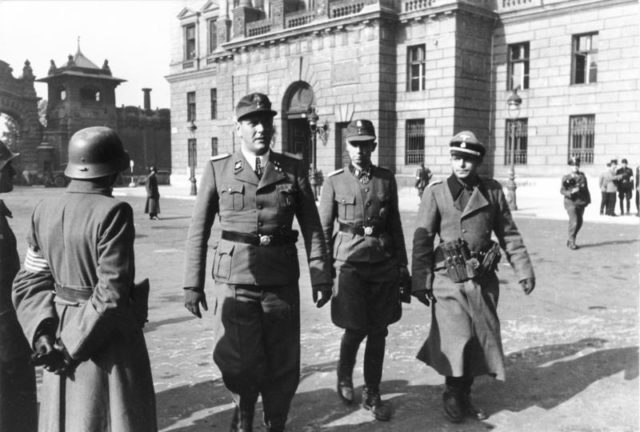
Also, the accommodation of two war correspondents and photographers which he had insisted upon reduced the number of troops who would have been needed in the event of a serious fire-fight breaking out with the Italian guards.
Further, his boarding of the light plane which spirited Mussolini away may have led to calamity given the minimal amount of take off space available on the rugged mountain terrain.
Skorzeny’s next major mission occurred just over a year later in Hungary. The background to ‘Untermehmen Panzerfaust’ was the Prince Regent Admiral Miklos Horthy’s attempt to negotiate a surrender to the Soviet Union; a development which would seriously weaken Germany’s already precarious situation on the Eastern Front.
The initiative here had been with the Soviets since the turning-of-the-tide victory in Stalingrad in early 1943 as well as the failed German attempt to stem the tide by engaging the Red Army in the great tank battle of the Kursk.
The defection of Hungary from the Nazi camp, coming after that of Romania, would have cut off the estimated million German troops still fighting in the Balkan Peninsula.
German policemen commanded by an SS-police chief in Budapest, Obergruppenfuehrer Otto Winklemann, were tasked with kidnapping Horthy’s son, who was allegedly influencing his father’s attitudes to the Soviets, and holding him hostage with the objective of forcing Horthy’s resignation.
As Skorzeny looked on from a car parked on a road, Winklemann’s men infiltrated an office building in which the younger Horthy was present, physically apprehended him and rolled him up in a carpet before depositing him in a truck and then transporting him to Vienna.
When the admiral’s resignation was still not forthcoming, Skorzeny proceeded to Castle Hill, the seat of the Hungarian government, with a convoy of German troops as a number of Tiger II tanks and other troops surrounded the heavily fortified hill. Recognizing that resistance would be futile, Horthy ordered his troops to surrender.
Horthy’s subsequent resignation paved the way for the installation of Ferenc Szalasi as the dictator at the helm of a pro-Nazi government. The success of the mission led to Skorzeny’s promotion to Obersturmbannfuhrer.
Although many renditions of this operation focus on Skorzeny as the key figure in this operation, even his memoirs cannot turn it into the concerto solo which he made out of the Gran Sasso mission.
Skorzeny’s limited role, despite a ‘letter of authority’ he claimed had been given him by Hitler, was played out in the context of a coup which had been planned and executed by a group of German military and civilian officials including Police General von dem Bach-Zelewski, Winkleman, Edmund Veesenmayer and Freiherr Adrian von Folkersam.
Skorzeny’s last major engagement of the war was that of his controversial participation in the Battle of the Bulge. Lasting from December 16 1944 to January 25 1945, this was Hitler’s last gasp offensive in the Western theatre. It was an attempt to smash the allies on the front where they were spread out thinly.
Using the fog of weather and the Ardennes forest as cover, the idea was to capture key bridges in Belgium from where the Germans could race to the sea while replenishing their resources from captured allied fuel depots and weaponry.
Skorzeny’s role during the Ardennes Offensive was to command the 150th SS Panzer Brigade. The brigade was divided into three combat groups each of which was attached to three Panzer divisions who would head towards the three Maas bridges at Angier, Amee and Huy.
An independent batch of commandos, ‘Enheit Stielau’, were tasked with miscellaneous objectives including blowing up those US Army supply dumps which would not be useful to the Germans and to remove any demolition charges attached to the bridges they wanted to cross.
Others would reconnoitre both banks of the Maas in order to sow as much confusion as was possible. This would be achieved, for instance, by reversing road sign posts and re-directing American troops via fake orders.
The plan for what was known as ‘Untermehmen Greif’ would form the basis of the most serious charge to be laid before him at the allied trials that were instituted after the war.
And while one aspect of his role was built up as an exemplar of the usage of psychological warfare as a mechanism for effectively paralysing a formidable enemy, albeit temporarily, an alternate and compelling view posits Skorzeny as an incompetent commander bereft of the basic skills required of a military officer.
Former colleagues were scathing of the route which he had taken into the German military. Wilhelm Walther, a member of the Brandenberg Special Forces Unit who for a time served as his chief of staff, claimed that Skorzeny was not of “officer material” and that he never viewed him as a genuine officer.
It was, of course, a common feature for officers of the Wehrmacht and longer established parts of the German armed forces to complain about the lack of professionalism in the training of Nazi created organisations such as the Sturmabteilung (SA), which Hitler had decimated during the ‘Night of the Long Knives’ and the Schutzstaffel (SS) which had begun as Hitler’s bodyguard but which had developed several arms including its combat wing, the Waffen-SS.
But criticism of Skorzeny’s military background came from the ranks of former SS colleagues. Karl Gabriel accused Skorzeny of lacking even “primitive and strategic tactical thinking” because he had not attained his commissioned status by undergoing a rigorous course at an officer training school.
The plan behind ‘Untermehmen Greif’ was for Skorzeny’s men who entered the battlefield wearing German parachute overalls, was to discard these once the American lines were pierced, and proceed to the bridges dressed in American service uniforms. The idea would be to secure the bridges and also to disrupt American activity by sowing confusion behind enemy lines.
Unfortunately for the Germans, the Panzers did not succeed in breaking through and while batches of Skorzeny’s men penetrated American lines in jeeps and wearing American uniforms, twenty-three were captured of which eighteen were summarily executed by firing squad.
Read Part Two Here
(c) Adeyinka Makinde
Adeyinka Makinde is a writer and lecturer in law who is based in England.
